Brooke Shields Comments on Pamela Anderson, “She’s Not Wearing Makeup. So What?”

Think about it. Almost anywhere in the world, you’ll be able to drink a cup of coffee. But how on Earth did coffee become so popular among us human mammals? And what does it take for coffee to go all the way from a bean to the delicious Java in our cups?
Well, meet Carla. She comes from a Brazilian family that owns one of the most successful coffee farms in the world. She’s going to show us around the farm and give us a behind-the-scenes look into the process of coffee production. By the way, do you even know what coffee is?
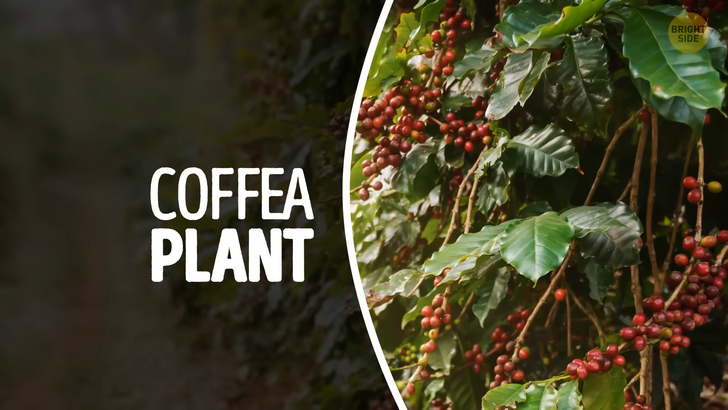
Coffee is a fruit. It grows in medium-sized shrubs known as the Coffea plant — just like the ones you can see all over this place. The fruit itself is called a cherry because it’s red in color. Carla is part of the team that picks cherries by hand, since they mature at a different pace.
She walks around with a large handmade basket and picks up to 55 pounds of cherries every day. If she’s been picking cherries all morning, she’ll pause to eat something sweet and appreciate her first cup of coffee of the day.
Carla, like me and probably you, are part of 1 billion people around the world that love drinking coffee. That means that we’ll share something in common — isn’t that nice? Carla will drink her coffee while sitting on a lovely balcony overlooking the beautiful mountains of Minas Gerais — it’s one of Brazil’s biggest coffee-producing regions.
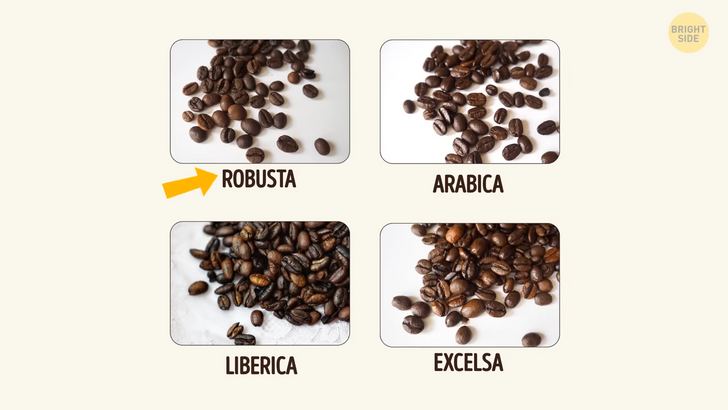
Her family farm works with Arabica beans. These are the beans usually sold in your local specialty coffee shop. They are superior quality beans with a richer flavor than the Robusta variety. Arabica beans are usually found at heights of 4,000 ft.
To thrive, they need high altitudes and a drier climate. Thankfully, Carla’s farm has all that Arabica beans need for a fantastic, delicious coffee. High altitudes allow coffee to have a richer taste since the oxygen in these regions is scarcer, and it takes longer for Coffea plants to grow and evolve.
As a lover of coffee, Carla likes trying out different varieties of coffee every week, buying from other producers around the world. Her pantry has coffee from Uganda, Ethiopia, Indonesia, Guatemala, and other regions of Brazil as well. After all, each region produces coffee with a unique taste. Ah, brewing methods also influence the taste, but we’re going to do the tasting later.
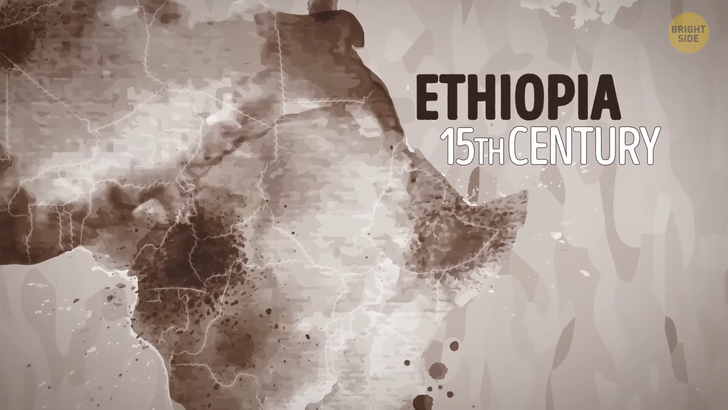
Carla’s family began working with coffee in the 20th century. Why does that sound so loong ago? Anyway, coffee itself is much older than that. It was discovered in Ethiopia back in the 15th century. After Ethiopians started to brew it and discovered that the beverage had energizing qualities, they started to sell the commodity to the nearby countries.
It is unknown who discovered coffee, but there is a legend that says that it was a mountaineer goatherd. He noticed that the goats were eating red cherries that left them more energized, and he decided to try it for himself.
It was only around the 17th century that coffee reached Europe through the trade done by Dutch merchants. These guys founded the first coffee shops in Europe. They were based in Amsterdam. But after that, coffee culture spread quickly around the western world. Today, the world’s biggest coffee consumer is the United States. Only the city of New York alone drinks millions of cups of coffee every day.
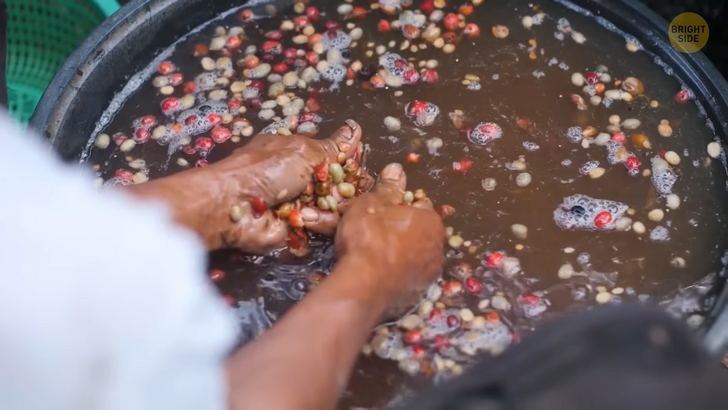
Now, back to Carla’s farm. The next stage of coffee production is necessary in order to get the beans out of the cherries. Producers need to do that without compromising the taste of coffee, so there are two ways to do that. One is a process called “washing,” the one that Carla does, and the other is known as a “natural process.”
After picking cherries, Carla washes the beans the way her great-grandfather taught her. First, she’ll put the cherries in a wet mill. This machine will separate the seeds, aka the coffee beans, from the fruit. Water is an important part of this process, as it will help to separate good beans from bad ones based on their density. Ripe beans are heavier, so they will sink to the bottom. A washed coffee bean will keep all of the original characteristics of the coffee bean, giving a more intense mouthfeel.
Then, the beans will need to be fermented for a day or two. Much like with cheese or chocolate, this is the part where coffee will acquire its rich and complex flavor. Some farms will ferment coffee beans for over 30 days — this is what is called a “natural process.” If you choose coffee that has undergone this process, expect a very fermented-tasting bean, almost cheesy in taste — but not in a bad way, I swear.
Now, remember we said that the best coffee farms are located in a dry climate? That’s because Carla needs to leave several tons of coffee to dry out in the open air before she continues the process. And no, the beans still aren’t ready for consumption. They’ll spend three weeks drying, and Carla will rake them regularly so that all the beans can dry evenly.
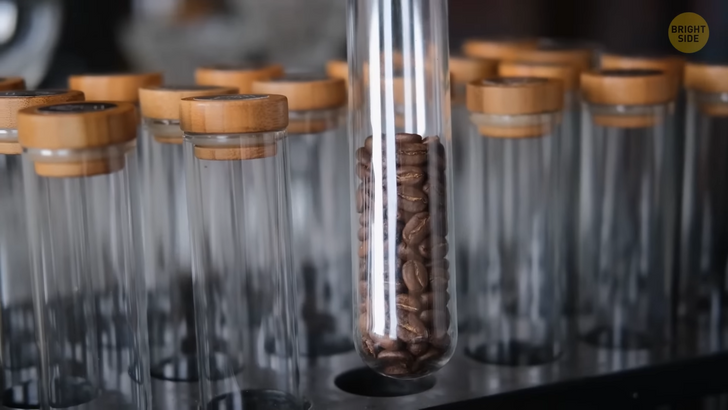
Finally, the beans will go to the roasting stage. This is when coffee is cooked — or should I say when it is baked? Whenever you walk into a coffee shop, you see that coffee beans are brown, right? But that’s not their original color. Coffee beans are usually greenish in color, and they turn brown only during the roasting process. It’s safe to say that roasting coffee is a science, one that needs precision.
Beans are baked at extremely high temperatures, ranging from 356˚F to 482˚F, so roasters have to be pretty careful not to over roast and burn entire batches of coffee! Since a pound of raw specialty coffee can cost up to $20 dollars, there’s not a lot of room for error while roasting. Next time you see a light roast coffee, remember that this process highlights traces of sweetness and floral notes, while a dark roast will bring a more chocolaty touch to it.
Some countries deliberately over roast their coffee beans — but this is a cultural option. Italians love extremely dark roasts, so it’s common that in their local coffee shops, you’ll taste an almost burnt espresso. But hey, it was Italian’s love for strong coffee that gave the world the Moka pot. The Moka pot was invented around 1933, and it is like a mini espresso machine. It’s a home-brewing method that will let you have a drink that is similar to espresso but is a more watered-down version of it.
Not all coffee producers roast their own coffee. A lot of farms sell their green beans to roasteries around the world. And hey, maybe your favorite local coffee shop is also a coffee roaster, so you’ll always get freshly roasted coffee.
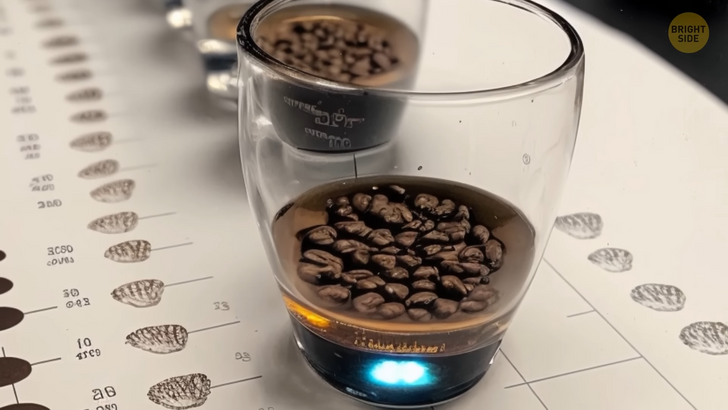
Here at Carla’s, they do their own roasting. To taste which roasts they’ll sell, they do something called cupping. This is when grounded beans are immersed in water, and professional tasters evaluate the coffee’s taste, aroma, and mouthfeel to determine its quality. Here’s the catch, they don’t actually drink this coffee. They just let it sit in their mouths and spit it into another cup.
Ok, since you’re a coffee expert now, let’s do some serious tasting. We need to pour the liquid into the cup first, so how can we do that? We can try out different brewing methods. You can try pour-over methods for vibrant flavors but less bitterness. If you don’t mind the natural bitterness, try some pressure methods, like the espresso machine, the AeroPress, or even the Moka Pot.
If you’re one of those people who love your coffee cold, how about a cold brew? Everything depends on the taste you’re looking for. That’s it — our coffee tour is over. But hey, next time you think that paying five or six bucks for a cup of specialty espresso is too much, remember how long the entire process takes and how many people are involved in delivering that tiny bit of liquid into your cup.











